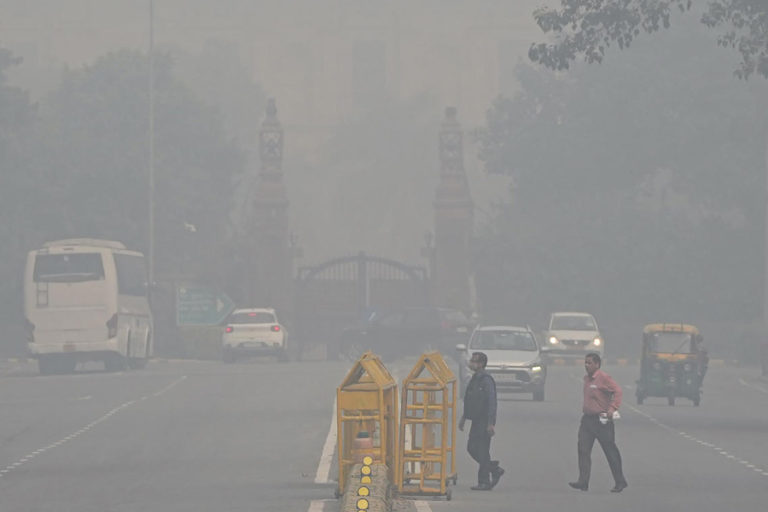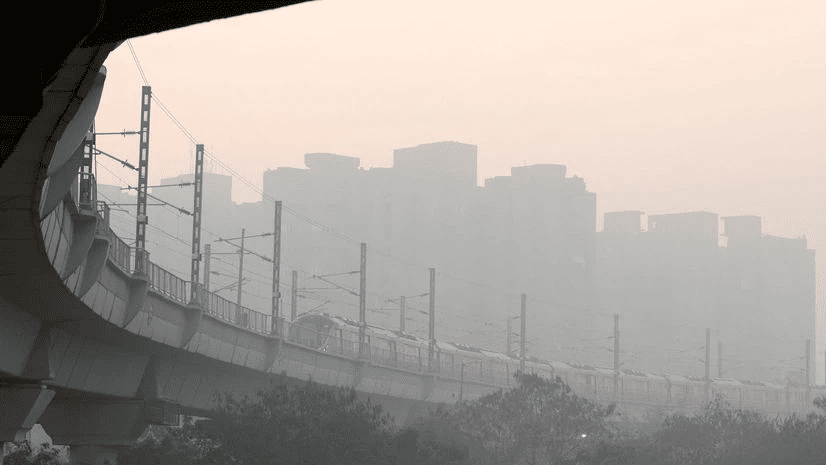- General
- Updated on October 30, 2025
Winter Air Pollution in North India: How to Stay Safe Indoors

Every winter, North India faces a familiar yet serious problem—air pollution. As temperatures drop, smog blankets cities like Delhi, Lucknow, and Chandigarh, turning the air into a toxic mix of dust, smoke, and chemicals. This spike in air pollution isn’t just an environmental issue—it’s a health crisis. Breathing this air can lead to coughing, fatigue, headaches, and even long-term respiratory diseases. However, by taking the right indoor precautions, you can protect yourself and your family from its harmful effects.
Understanding Winter Air Pollution in North India
Winter air pollution is not just the result of one cause—it’s a mix of several factors that combine during the cold season.
The Role of Weather and Geography
During winter, the air becomes denser and traps pollutants close to the ground. This phenomenon, known as temperature inversion, prevents pollutants from dispersing. Cities in North India, especially those surrounded by plains, are particularly vulnerable because of limited air circulation.
Common Sources of Pollution
The major contributors to North India’s winter smog include:
- Vehicular emissions: Heavy traffic adds nitrogen oxides and particulate matter to the air.
- Crop burning: Farmers burn leftover stubble after harvest, releasing huge amounts of smoke into the atmosphere.
- Industrial activities: Factories emit pollutants that linger due to stagnant air.
- Household heating: Many households use wood, coal, or kerosene for heating, adding to indoor and outdoor pollution.
Why Indoor Air Quality Matters

When outdoor air becomes toxic, people naturally spend more time indoors. But many don’t realize that indoor air can be just as polluted—sometimes even worse. Pollutants from cooking, dust, cleaning products, and outdoor air that seeps in can all accumulate indoors.
Health Risks of Poor Indoor Air
Breathing in polluted air over time can cause:
- Worsened asthma or allergies
- Chronic cough or throat irritation
- Fatigue and headaches
- Long-term heart and lung problems
For children, the elderly, and those with weakened immunity, these effects can be severe.
How to Stay Safe Indoors During Winter Pollution
When winter pollution peaks in North India, staying indoors doesn’t always mean you’re safe — indoor air can often be just as polluted as the air outside. Dust, smoke particles, and toxins can easily enter through windows, doors, or ventilation systems. To protect yourself, focus on creating a clean and healthy indoor environment. Use high-quality air purifiers with HEPA filters, keep windows closed during smog-heavy hours, and regularly clean surfaces to reduce dust buildup. Adding indoor plants like peace lilies and snake plants can also help naturally purify the air. Staying hydrated and using steam inhalation can further ease the effects of dry, polluted air on your respiratory system.
1. Use Air Purifiers Wisely
A high-quality air purifier is one of the best defenses against pollution indoors. Look for purifiers with a HEPA filter that removes fine particles (PM2.5 and PM10) effectively.
- Place purifiers in bedrooms and living areas.
- Keep doors and windows closed when using them.
- Clean or replace filters regularly for maximum efficiency.
2. Seal Air Leaks
Polluted outdoor air can easily enter through gaps in windows and doors. Use weather stripping or caulking to seal these spaces. You can also use heavy curtains to add an extra layer of protection against dust and smoke infiltration.
3. Introduce Air-Purifying Plants
Certain indoor plants can help improve air quality naturally. Consider adding:
- Areca palm (removes formaldehyde)
- Snake plant (absorbs carbon dioxide at night)
- Peace lily (filters airborne toxins)
While they won’t replace air purifiers, these plants can complement your indoor air strategy.
4. Ventilate Smartly
Complete air sealing can make your indoor environment stuffy. To maintain fresh air without inviting pollution:
- Ventilate early in the morning when outdoor pollution levels are lowest.
- Use exhaust fans in kitchens and bathrooms.
- Avoid cross-ventilation during high-smog hours (evenings and late nights).
5. Avoid Indoor Pollutants
During the winter, it’s easy to overlook activities that worsen indoor air quality. Be mindful of:
- Candles and incense: These release soot and chemicals.
- Non-stick cookware fumes: Overheating Teflon pans can emit harmful gases.
- Chemical cleaners: Switch to natural cleaning solutions like vinegar and baking soda.
6. Maintain Indoor Humidity
Dry winter air can irritate the throat and lungs. Using a humidifier helps maintain comfort, but it’s essential to clean it regularly to avoid mold growth. Aim for indoor humidity levels between 30–50%.
Lifestyle Tips for Coping with Winter Pollution
Winter pollution can take a toll on both your physical and mental health, especially in regions with high smog levels. Adjusting your daily routine can make a big difference in how your body responds to poor air quality. Simple lifestyle changes—like modifying your diet, staying hydrated, and planning outdoor activities wisely—can help minimize exposure and boost your natural defenses. Combining these habits with air purification and proper ventilation ensures you breathe cleaner air even during the most polluted days.
Stay Hydrated and Eat Clean
Pollution can lead to oxidative stress in your body. Combat this by consuming foods rich in antioxidants—like citrus fruits, spinach, turmeric, and green tea. Staying hydrated helps flush toxins from your system.
Exercise Indoors
Avoid outdoor workouts during high-pollution hours. Instead, do yoga, stretching, or home workouts indoors. If you must go outside, wear an N95 mask to filter out harmful particles.
Keep Track of Air Quality
Regularly check the Air Quality Index (AQI) using apps or government portals. Knowing when pollution levels are high helps you plan your day—limiting outdoor exposure during the worst hours.
Strengthen Your Immune System
Your body’s defense plays a huge role in managing pollution-related effects. Ensure adequate sleep, include vitamin-rich foods in your diet, and consider supplements (under professional guidance) to support immunity.
Community and Long-Term Solutions
While individual precautions matter, tackling winter pollution requires a collective effort. Support initiatives that promote:
- Cleaner fuel options for households and vehicles.
- Reduced crop burning through sustainable alternatives.
- Plantation drives and urban green zones.
Participating in community clean-air campaigns can amplify awareness and push for policy-level changes that protect public health.
When to Seek Medical Help
If you experience symptoms like persistent coughing, breathlessness, or chest tightness, don’t ignore them. Consult a doctor, especially if you have pre-existing conditions such as asthma or heart disease. Early intervention can prevent complications caused by prolonged pollution exposure.
Read Also : How to Style Your Winter Clothes for the Summer Heat
Conclusion
Winter air pollution in North India is a recurring challenge, but awareness and preparation can go a long way in keeping you safe. By improving indoor air quality, maintaining healthy habits, and supporting community-level solutions, you can protect your family’s well-being even when the smog thickens outside. Remember, staying informed and proactive is your best defense against polluted air this winter.
Join the discussion
Related Articles
No results available
ResetTrending Articles


- General
- Updated on November 19, 2025


- General
- Updated on November 19, 2025


- General
- Updated on November 14, 2025


- Tech
- Updated on November 12, 2025


- General
- Updated on November 8, 2025


- General
- Updated on November 6, 2025


- Sports
- Updated on November 5, 2025


- General
- Updated on November 4, 2025


- General
- Updated on November 1, 2025

- General
- Updated on October 30, 2025
No results available
Reset


